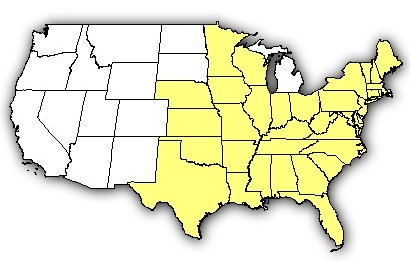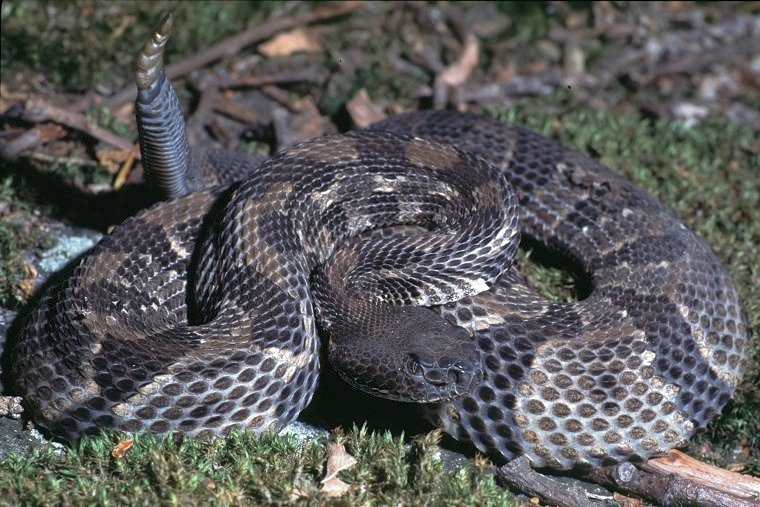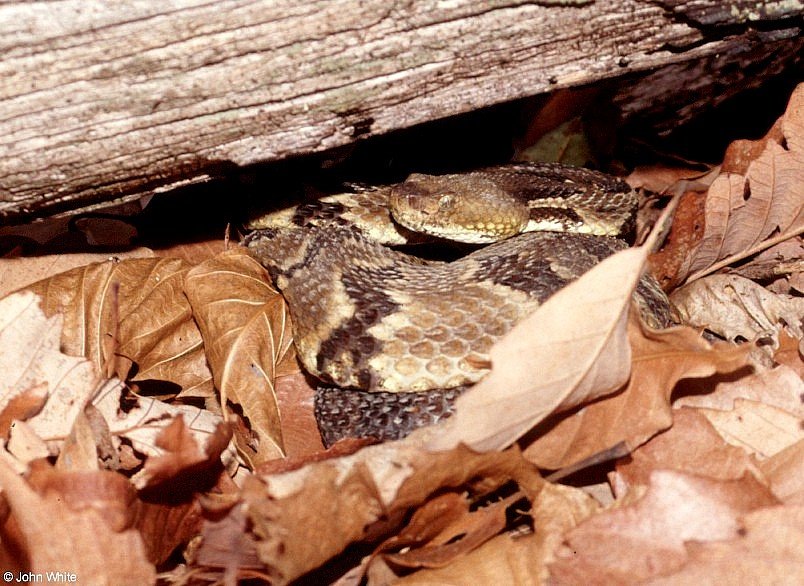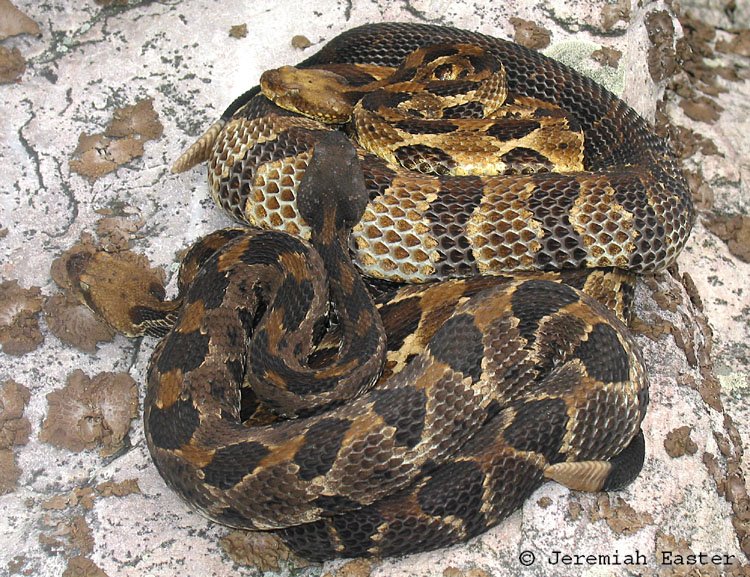TIMBER RATTLESNAKE
Scientific name: Crotalus horridus
Size
The average size of a mature Timber Rattlesnake is 3 - 5 feet in length, with some getting as large as 6 feet.
Description
The Timber Rattlesnake is a heavy, thick-bodied snake. The body of the snake can vary greatly in color. Timber Rattlesnakes were once categorized by scientists as two different subspecies, but have since been grouped as a single species.
Northern Timber Rattlesnakes, generally called Timber Rattlesnakes, are typically a yellowish-brown or grey. The head has no markings on it and is simply the color of the body. On the front of the body there are dark black blotches on the back and sides of the Timber Rattlesnake. About a third of the body down from the head, the dark blotches start to touch and form bands across the back of the Timber Rattlesnake.
Southern Timber Rattlesnakes, generally called Canebrake Rattlesnakes, are typically yellowish, pinkish-grey, brown, or grey. A reddish-brown or rust colored stripe runs along the spine. The back is banded with black chevron shaped bands that appear to cover the reddish-brown stripe. There is sometimes, but not always, a dark stipe on both sides of the head that starts at the eye and runs diagonally down and backwards to the jaw.
On both the Northern and Southern Timber Rattlesnakes, the tail is completely black and ends with rattle on it.
The Timber Rattlesnake has elliptical pupils that look like cat's eyes and like all pit vipers, has a heat-sensing pit between the nostril and eye on each side of its head. The Timber Rattlesnake has a large, triangular head that is wider than the neck when viewed from above.
Distribution
In the United States, the Timber Rattlesnake is found in almost every eastern state, although it is a
protected species in most areas.

Map does not show area of true distribution, only the states in which there is a population.
Actual distribution in any highlighted state may be limited.

Photo used by permission:
© 2003 Twan Leenders

Photo used by permission:
© 2001 John White

Photo used by permission:
© 2005 Jeremiah Easter
For more information on venomous snakes, please see the Venomous Links page.
Terms and Conditions | Privacy Policy
Change your Cookies Preferences
